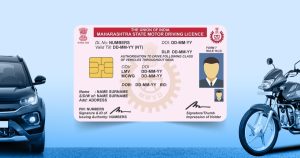The workforce of today is diverse, as a whole and also at the individual level. People moving countries and continents for better employment prospects is becoming more common, and the international mobility regime is posing new challenges to recruiters. Staffing not only involves selecting the best candidate for the job, but also verifying that the assessed credentials, experience, personality and other elements of the person are authentic to the core. Unfortunately this has stemmed from some instances of imposters or faked qualifications, every now and then.
This is where the background verification process is critical—to get to know the “real” person behind the CV and the cover letter. Getting an international level background verification done, is quite complex compared to a local-level case where the school, college and previous employers may be within the country and easily reachable. Yet, the recruiter must carry it out with the same accuracy, and often under tight deadlines. Here is what the recruiter must keep in mind while carrying out international background checks, whether by self or through a consultant:
1. Turnaround time will be longer: A local level background check is generally a matter of few days, but when an international process comes into the picture, one can expect more time being spent contacting the school, police records (for criminal charges), college, previous employers, public records etc. This is because some countries may have very stringent privacy laws, making it difficult or time-consuming to get the details. In some cases, you may have to live with incomplete information since it will not be available in public domain, or on request.
2. Study the rules: As mentioned, every country will have its own rules of sharing data with outsiders. Recruiters often rely on the background check consultant to carry out the process, and they may take their own time. Make it a point to get the process and requirements clarified upfront, by asking questions. In fact, it is a good practice to build an information repository on the laws of various countries, and keep it as a ready reckoner in the talent acquisition team.
3. Extra documentation: Foreign countries may ask for extra proof of identification or any other documents to carry out the background check.This makes it imperative that you be prepared with as much information about the candidate as possible, at the beginning itself. This will not only faster up the process, but also aid an accurate background verification process.
4. Standardize the hiring process: Not only will this protect the recruiter and the company against claims of discrimination or negligence in hiring, incorporate international background screening as a must-have process in your recruitment lifecycle. Employers often tend to carry out a half-baked verification just because it takes time, which is scarce. Often, it is left to the person to carry out or let go. Person-specific decisions on hiring can create much confusion, it is best to standardize the hiring lifecycle and ensure adherence through audits.
5. Get help: A company may not have the in-house resources or the expertise to carry out international background verifications. It then makes sense rope in a vendor who specializes in this domain. Not only are these people aware of country-specific laws, but are updated on any case-specific watch-outs or law changes. Choose a vendor carefully by questioning the vendor on their accuracy, consistency, documentations processes, issue resolution and support, and other practices. Global hiring is going to become a widespread reality, creating a pressing need for international background checks.
The recruiters and HR professionals of tomorrow need to be observant, curious and committed to the cause of building an authentic team. After all, one rotten apple can cause many, and it is important to safeguard the organization from that rotten one. Source:HRTechnologist






